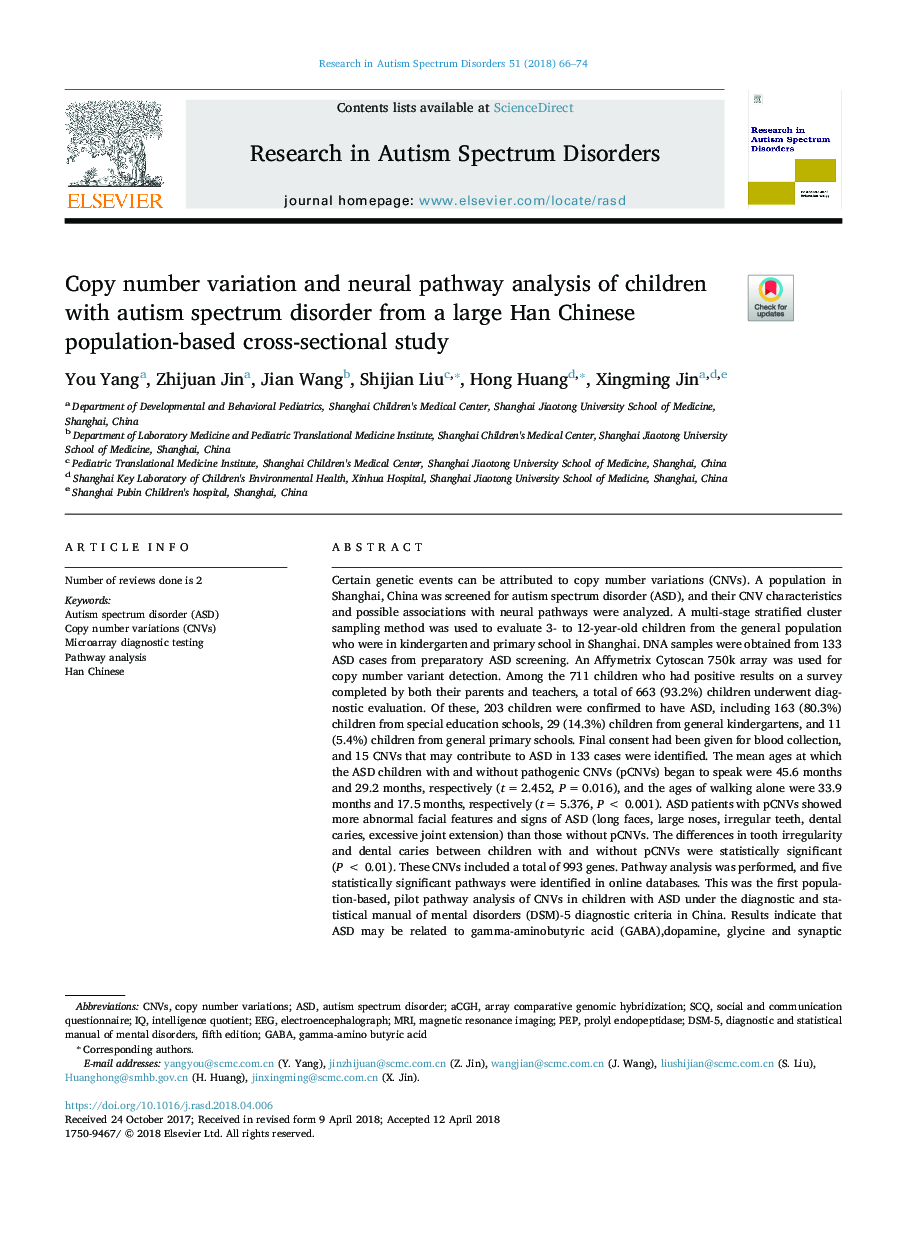| Article ID | Journal | Published Year | Pages | File Type |
|---|---|---|---|---|
| 6847919 | Research in Autism Spectrum Disorders | 2018 | 9 Pages |
Abstract
Certain genetic events can be attributed to copy number variations (CNVs). A population in Shanghai, China was screened for autism spectrum disorder (ASD), and their CNV characteristics and possible associations with neural pathways were analyzed. A multi-stage stratified cluster sampling method was used to evaluate 3- to 12-year-old children from the general population who were in kindergarten and primary school in Shanghai. DNA samples were obtained from 133 ASD cases from preparatory ASD screening. An Affymetrix Cytoscan 750k array was used for copy number variant detection. Among the 711 children who had positive results on a survey completed by both their parents and teachers, a total of 663 (93.2%) children underwent diagnostic evaluation. Of these, 203 children were confirmed to have ASD, including 163 (80.3%) children from special education schools, 29 (14.3%) children from general kindergartens, and 11 (5.4%) children from general primary schools. Final consent had been given for blood collection, and 15 CNVs that may contribute to ASD in 133 cases were identified. The mean ages at which the ASD children with and without pathogenic CNVs (pCNVs) began to speak were 45.6 months and 29.2 months, respectively (tâ¯=â¯2.452, Pâ¯=â¯0.016), and the ages of walking alone were 33.9 months and 17.5 months, respectively (tâ¯=â¯5.376, Pâ¯<â¯0.001). ASD patients with pCNVs showed more abnormal facial features and signs of ASD (long faces, large noses, irregular teeth, dental caries, excessive joint extension) than those without pCNVs. The differences in tooth irregularity and dental caries between children with and without pCNVs were statistically significant (Pâ¯<â¯0.01). These CNVs included a total of 993 genes. Pathway analysis was performed, and five statistically significant pathways were identified in online databases. This was the first population-based, pilot pathway analysis of CNVs in children with ASD under the diagnostic and statistical manual of mental disorders (DSM)-5 diagnostic criteria in China. Results indicate that ASD may be related to gamma-aminobutyric acid (GABA),dopamine, glycine and synaptic proteins. These findings are consistent with those of previous studies and provide new evidence for the role of regulation of proteolysis and endopeptidase activity in ASD.
Keywords
CNVsSCQPEPaCGHDSM-5Autism spectrum disorder (ASD)Autism spectrum disorderArray comparative genomic hybridizationelectroencephalographMRIintelligence quotientPathway analysisMagnetic resonance imagingDiagnostic and Statistical Manual of Mental Disorders, Fifth EditionASDEEGHan Chineseprolyl endopeptidaseCopy number variationsGABAgamma-amino butyric acid
Related Topics
Life Sciences
Neuroscience
Behavioral Neuroscience
Authors
You Yang, Zhijuan Jin, Jian Wang, Shijian Liu, Hong Huang, Xingming Jin,
